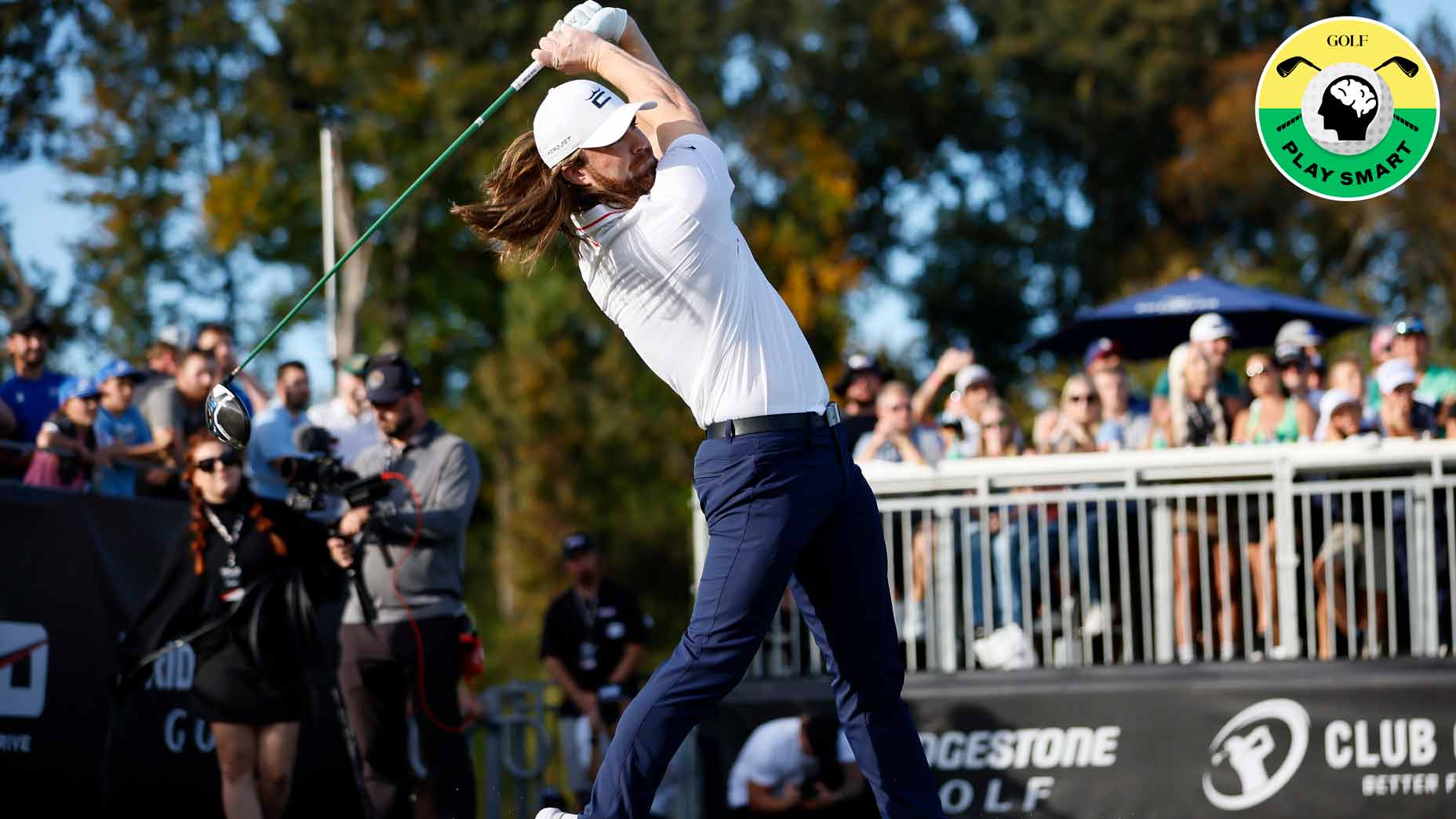Adam Scott’s 5 keys for generating easy power

Create a powerful turn and you’ll blast it past your friends without looking like you’re even trying.
Getty Images
Golf instruction is ever-evolving, but the best advice stands the test of time. In GOLF.com’s new series, Timeless Tips, we’re highlighting some of the greatest advice teachers and players have dispensed in the pages of GOLF Magazine. Today we look back at some power tips from Adam Scott from our August 2009 issue. For unlimited access to the full GOLF Magazine digital archive, join InsideGOLF today; you’ll enjoy $140 of value for only $39.99/year.
There aren’t many golfers who have a swing that looks quite as good as Adam Scott’s. If you were building a prototypical golfer, using Scott’s swing would be a great place to start.
One of the beautiful things about Scott’s swing is just how smooth it looks. There are no hitches or yips. Just a smooth move that makes the ball explode off the clubface.
It’s unlikely that any of us will ever swing quite like the former Masters champ, but there are some elements of it we can incorporate into our own games. Back in 2009, Scott teamed up with GOLF Magazine to share five of his best keys for generating easy power. Try them out for yourself and see how your distance soars.
Adam Scott’s 5 power keys
Ben Hogan said that any golfer could break 80 if he set his mind to it. I don’t know about that, but I think every golfer is capable of breaking 90.
To max out your scoring potential, you’ll need to max out your distance off the tee. Many amateurs try to get there by swinging as fast they can, but all that does is upset your rhythm. When you watch Tour events, the guys never look like they’re swinging hard, yet many regularly blast it 300-plus yards.
How do they do that? The key to effortless power is your rotation around your spine. What that means is you want a small hip turn and a big shoulder turn to store power during your backswing. Then maintain a stable core so you can release all that energy at impact.
Scroll down below and I’ll show you how.
1. Setup: Create a stable base
My setup is the basis of my whole swing. You want to get into a comfortable position where you feel confident about hitting the ball. For me, it’s a matter of getting into the right posture, setting my hands correctly on the grip and teeing the ball at the height that allows me to contact the ball in the center of the sweet spot.
How to find your perfect setup
To find the address posture that’s right for you, follow my routine. It’s the one I use for every swing I make, whether I’m on the range or competing in a PGA Tour event.
1. Stand straight up with the club out in front of you.
2. Flex your knees until you feel comfortable and athletic
3. Then bend at your hips down to the ball.
2. Backswing: Get wide in the takeaway
Rotation plays a big part in how I create power in my swing. In fact, when I want to improve my swing, I go to the gym as much as the driving range because it’s so important for me to maintain my strength and flexibility. When I start my backswing, I focus on taking the club away by turning my shoulders while keeping my hips still. Strive for a smooth, one-piece takeaway, and feel like you’re turning into the inside of your right leg (you should see wrinkles in your right pants pocket).
3. Top: Feel the clubhead
Starting down too fast from the top is the worst kind of power leak. You want to build up speed in your downswing so you’re approaching your maximum clubhead speed as you approach impact. If you start too fast, you’ll be slowing down into impact.
Your smooth, one-piece backswing should allow you to feel exactly where your clubhead is at the top. Think about making a big shoulder turn and a small arm turn, and keep your hands as far away from your head as possible to store maximum power in your turn.
4. Impact: Lock down your core
You won’t consistently drive the ball far unless you can maintain your posture throughout your swing. The most common mistake people make is to straighten up when they swing down. You create effortless power with the clubhead speed you generate when you unwind the coil you created in your backswing around your spine, and to do this, you need to stay in the same posture you had at address.
The focus of your whole swing is to turn around your spine. Lots of people get confused when golf instructors start talking about “spine angle.” What it means is that your core needs to remain stable throughout your swing. If you stay in your posture, you’ll maintain your angles and let your arms swing freely, which will allow you to unleash a powerful strike on the ball.
5. Follow through: Finish with authority
Try to end your swing really hard on your left side, with your eyes looking at the target and your left leg straight. This means that you’ve been able to rotate fully around your spine and make a complete body turn. Your goal at the end of your swing should be to feel balanced, just like you were at address. This is easy to do when you swing within yourself.
Related
5 Things I Never Play Golf Without: David Dusek
Our 11-handicap equipment writer always brings his favorite divot repair tool, a portable speaker and some high-tech gear to the course.As long as the weather i
Donald Trump’s golf course wrecked by pro-Palestine protesters
Pro-Palestinian protesters have vandalized parts of U.S. President Donald Trump's golf course in Scotland in response to his proposal for the reconstruction of
Man holding Palestinian flag scales London’s Big Ben hours after…
CNN — Emergency services were called to London’s Palace of Westminster on Saturday a
EPD: Drunk driver parked car on golf course
EVANSVILLE, Ind. (WFIE) - Evansville police say they arrested a man after finding him drunk in his car that was parked on a golf course.Officers say they were c













